This is a very common situation and of course, the consequences it leaves are not light. The sudden tire blowout will really cause serious consequences if you do not know how to handle it properly.
A tire blowout when moving often occurs with old cars that are less interested in tires by car owners. In addition, blown tires are common on highways where high speed is allowed. Then, the friction and heat will make the old tires at risk of a blowout.
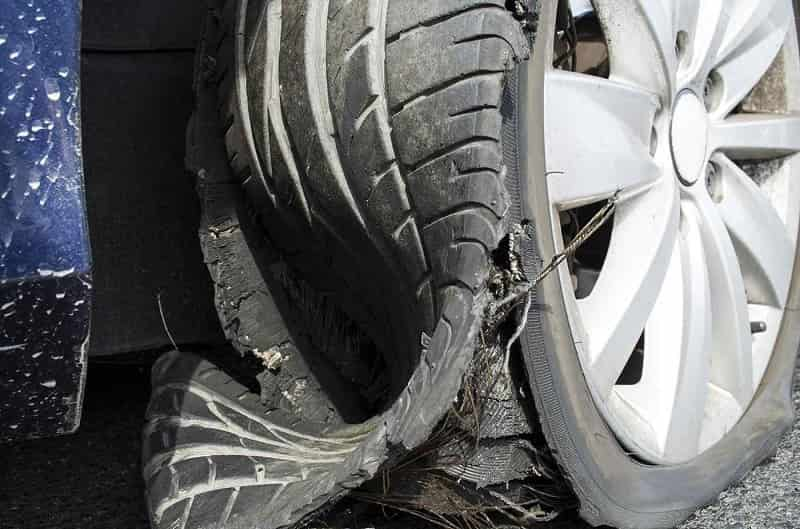
If you have a tire blowout, what should you do?
Contents
What causes car tire blowout while driving?
Some telltale signs of a tire blowout include a loud explosion. The causes of tire blowout include over-inflated/under-inflated tires, uneven tread wear, and overloaded vehicles, running at high speed, tires are past their expiry date or use that does not conform to the permitted specifications are printed on the sidewalls of the tire.
1. Car tires that are lack air
Insufficient tire pressure is considered the main cause of tire blowout. In fact, according to the operating principle, the air pressure in the car tires lifts the entire weight of the vehicle and the weight of passengers and luggage.
A tire that lacks air means that the tire has to bear an additional responsibility that causes tire components to work too hard. In addition, the lack of air will cause the tires to not be cooled. The area of friction between the tire and the road surface will cause overheating and easy to explode.
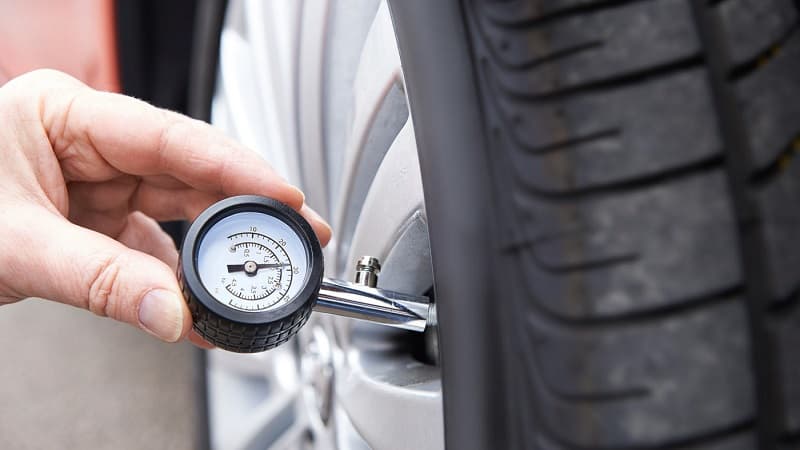
Experienced car drivers say that you should check your wheels regularly through a hand-held tire pressure gauge. Besides, you can install a tire pressure sensor for continuous observation. When inflating your vehicle, you must also follow the pressure readings that are usually posted on the back of the driver's door.
2. Overloaded car
Overloaded cars have become an eternal problem. Overloading has inadvertently placed the tires in the maximum load limit. The heat generated in the process of friction with the road surface and moving through the convex and concave roads will push the endurance of the shell to the limit. Therefore, the situation of a tire blowout is inevitable.
3. Gravel and potholes
Falling into a pothole is something that will kill the car's tires immediately. It can even destroy the wheels. If you run at low speed, falling potholes will only make you feel uncomfortable. However, when running at high speed, the pressure from the road surface will cause the tires to explode, crack the wheels and the shock absorber.
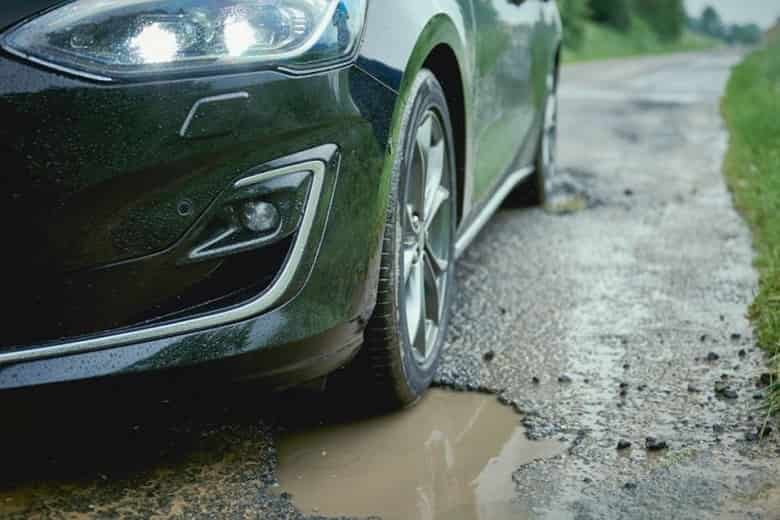
In case you are driving a sports car with enormous wheels, it means that the thickness of the shell will be thin. The small ledges or stones at high speed will damage the tire. Therefore, the advice of experienced car drivers is to run at a moderate speed if you are not familiar with the road. It is difficult to spot potholes at a distance when the driver's vision is limited, especially when traveling too fast.
4. Car tires that are too old
Tires that are too old will wear to the limit. When operating at high speeds, the factors of temperature, pressure and load capacity will destroy your tires. When drivers run on highways at fast speeds, the tire friction with the road surface. Then, the heat leads to a sudden tire blowout, especially old tires that have an overdue tolerance.
According to the manufacturer's recommendations, drivers should change tires every 50,000 miles depending on road conditions. If you have to drive on bad roads, we should replace it after 40,000 miles or after five years of use.
5. Cornering too fast at high speed
Tires can also easily blow out for the simple reason that you corner too quickly at high speeds while the tires are already worn out too much.
6. Broken rim
Damaged rims cause car tires to be scratched during use. Lots of scratches and too deep will not withstand the pressure, so the tire will blow out.
What to do when the car has a sudden tire blowout while driving on the road?
Cars with tire blowouts when running at high speed are considered quite common, due to limited road conditions as well as drivers who are not interested in tire maintenance (tires are too worn, overinflated) lead to tire blowout accidents when driving fast.
When an incident occurs, the drivers will be surprised. If they do not handle it in time, it will cause serious injury to the drivers and the surrounding vehicles. If the car has a tire blown out at a fast speed, the experience and handling skills will limit the dangers caused by this unexpected situation. Here are some notes on how to handle a car with a blown tire when running at high speed:
1. Keep calm - Keep the steering wheel - Limit sudden braking
A tire blowout often startles the driver and causes the vehicle to lose control. If a tire blows out the proper thing to do is to keep calm. At this time, drivers need to calmly judge the possible road hazards to minimize them.
The first is to keep the steering wheel first. When the tire blows out, it will often lose its balance and rush the car with momentum. Therefore, you must grip the steering wheel. Keep it so that the car does not rush into other cars, sidewalks, or cliffs.
Normally, when faced with this situation, the driver will react quickly and press the brake pedal hard, hoping the car will stop immediately. However, this is the most dangerous action in this case. The sudden braking can cause your vehicle to lose control and the rear of the car was thrown to the side, endangering yourself and other vehicles.
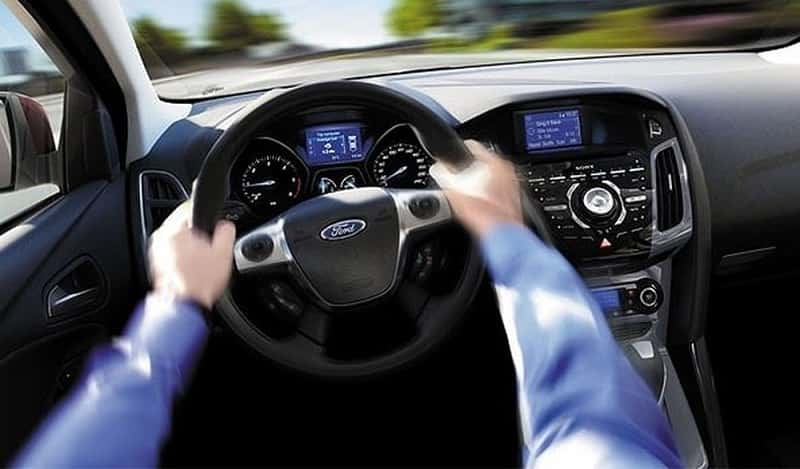
2. Hold the accelerator and reduce speed slowly
It sounds contradictory and absurd, but pressing the accelerator will give you more time to assess the situation. During this time, the car cannot increase the speed because the tire has blown. When a tire is blown, the car will immediately have to pull a tremendous weight. This weight will help your vehicle decelerate safely with no brakes. Even when you step on the accelerator, the car will still slow down.
Then, use the brake to slow down. You should brake slowly. Do not brake to death because the dead brake will lose more inertia and splash more. We can press and release the brake until the car decelerates and stops completely. If possible, while braking, please steer to the curb. It will avoid the case that the following car is also speeding up, it will collide with your car.
3. Turn on the warning signal for vehicles around
If you have a tire blowout, for the safety of yourself and other vehicles on the road, even if you are trying to keep driving, you also need to turn on the warning signal for the surrounding vehicles to recognize to not approach and avoid the worst case of collision. Then you try to move the car to the curb to find a way to fix it. If you have a tire blowout you should turn on your turn signal to warn other vehicles that you are changing direction. Slowly take your foot off the accelerator and let the car stop automatically. Once the vehicle has come to a complete stop, check your surroundings before leaving the vehicle.
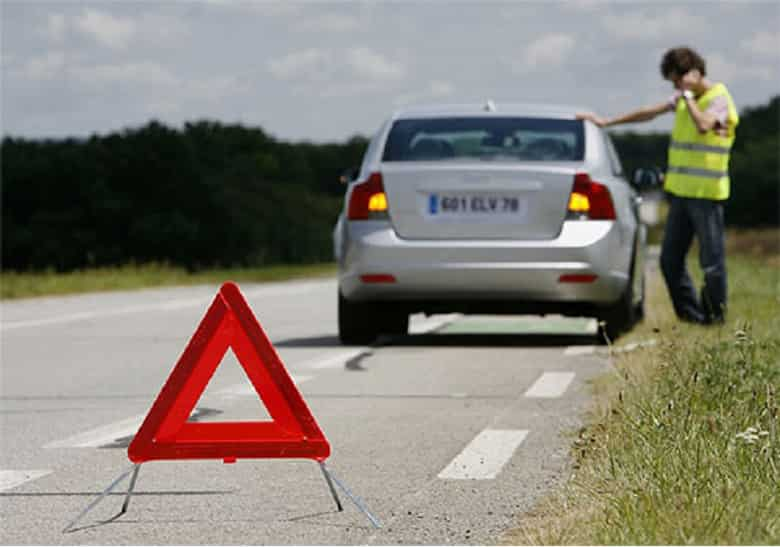
4. Replace the spare tire or call rescue vehicles
In case your vehicle has a spare tire available, you need to be careful and take steps to change the spare tire quickly and properly. Note, blown tires can have sharp pieces of metal ready to injure you.
In case your car is not equipped with a spare tire. If you are traveling on highways, remember and take pictures of the emergency numbers attached to both sides of the road.
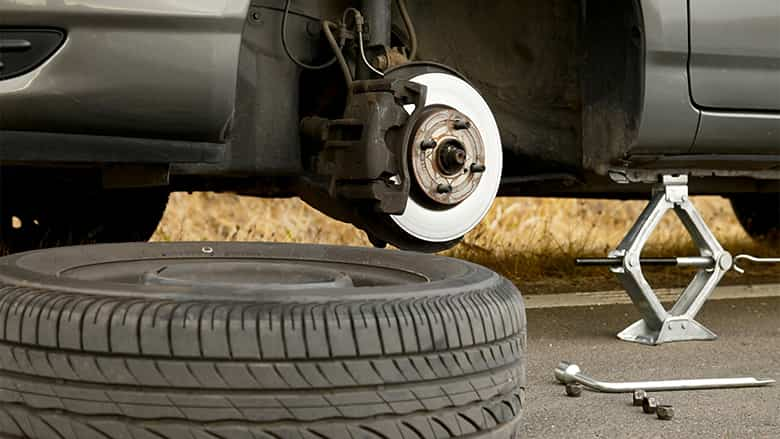
And if in case you do not have a support phone number. Make a signal to seek help from other vehicles traveling in the same direction, maybe when they get to the next toll station or stop, they will help you call for help from the lifeguards or the staff of that highway service center. Note, always turn on the turn signal during the tire change process so that the vehicles behind know to avoid. Absolutely do not drive until the tire has been changed.
How to avoid a tire blowout on the road
Unexpected tire blowouts are very dangerous, so drivers should avoid this situation by having their tires checked and serviced regularly. Especially the tires should not be too worn and should replace the new tire as soon as the old tire is found to have a serious problem. In addition, the driver should prepare a spare tire and a tire change tool in case the rescue cannot be called.
1. Check your tires regularly
Regularly check the tire with the naked eye before the start of each journey. You can go around the car and take a look at it to detect abnormalities such as cracked, tire bulge, torn tires, etc.
2. Check tire pressure
Periodically inflate car tires to the standard pressure (including the spare tire). When a car tire is underinflated, it will increase the friction surface, the tire wall will heat up very quickly when running at high speed and the risk of the explosion will be greater.
If the pressure is too high, the tire will bulge, the middle part of the tire is mainly in contact with the road surface, causing this part to wear more, and at the same time increasing the risk of tire blowout in the sunny and under heavy loads.
3. Reduce speed when cornering
When the vehicle is traveling at high speed, cornering can cause the tire wall to be under heavy load, and is also subjected to lateral tearing forces, increases the risk of a tire blowout. You should drive at the right speed.
4. Use quality tires
You should use quality tires for your vehicle. Especially used for 2 front wheels, because these two tires are the same size and wear evenly. If you see uneven tread wear, you must align the wheels or rotate the tires.
5. Driving with a high concentration
Always focus on driving on the road, and place both hands on the steering wheel (unless you need to shift gears on a manual transmission). Losing concentration or driving with one hand can make you startle and lose control when something unexpected happens.
6. The vehicle is not overloaded
Never drive your car with a weight limit not recommended by the manufacturer. This will help your car not be overloaded, avoid affecting the wheels, reduce tire blowout.
Some notes to avoid a tire blowout
- Usually, front tires tend to wear more easily because the steering is in a stationary position and the wheel is turning. Therefore, when changing, you should replace 4 tires
- Check and align the steering wheel and wheel angle periodically. This will prevent uneven tire wear and a misaligned or loose steering wheel.
- You can buy a tire pressure sensor to monitor and prevent tire blowout due to possible pressure.
Conclusion
A tire blowout is an undesirable situation because the consequences it causes are extremely severe. Hopefully with the sharing of the causes of a car tire blowout, how to handle and prevent it, will help you have a correct view of the importance of monitoring and replacing tires regularly. Wish you always safe driving and lots of fun.
I’m Ivo Gievski, the content writer for Tireer. We built our website with over 15 years of experience and extensive research in the automotive and technology sectors. My dedication to delivering high-quality content is unwavering, and I strive to continuously hone my skills to stay ahead of industry trends and provide readers with informative, engaging, and valuable insights.